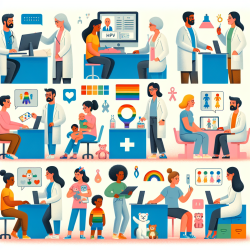The recent study titled "Should men be exempted from vaccination against human papillomavirus? Health disparities regarding HPV: the example of sexual minorities in Poland" provides critical insights that can significantly influence how we approach HPV vaccination and education, especially in underserved populations. This blog will discuss how practitioners can leverage the findings to improve health outcomes for children, focusing on the role of data-driven decisions and educational outreach.
Key Findings from the Research
The study reveals alarming disparities in HPV awareness and vaccination rates among men in Poland, particularly within LGBTQ+ communities. Key points include:
- 75% of heterosexual and 88% of homosexual men were aware of HPV, but only 4% and 17% respectively were vaccinated.
- HPV infection is linked to various cancers, including anal and oropharyngeal cancers, yet awareness is significantly lower among heterosexual men.
- 88% of respondents believe that all genders should be vaccinated, yet only 57% were aware of the availability of HPV vaccines in Poland.
Implications for Practitioners
The data underscores the need for comprehensive educational campaigns and accessible vaccination programs. Practitioners can take several actionable steps:
- Enhance Educational Outreach: Utilize platforms like social media, community events, and school programs to disseminate information about HPV and its risks.
- Focus on Underserved Populations: Tailor educational materials to address the specific needs and concerns of LGBTQ+ communities.
- Collaborate with Healthcare Providers: Work with local healthcare providers to ensure they are equipped with the knowledge and resources to educate patients about HPV.
- Advocate for Policy Changes: Push for mandatory, refunded vaccination programs to increase uptake and reduce health disparities.
Encouraging Further Research
While the study provides valuable insights, it also highlights the need for further research. Practitioners should consider:
- Conducting Local Surveys: Gather data on HPV awareness and vaccination rates within their own communities to tailor interventions more effectively.
- Exploring Longitudinal Studies: Investigate the long-term impact of educational campaigns and vaccination programs on HPV-related health outcomes.
- Partnering with Academic Institutions: Collaborate with universities to conduct comprehensive studies that can inform policy and practice.
Conclusion
The research on HPV vaccination disparities offers a roadmap for practitioners committed to improving children's health outcomes. By focusing on education, accessibility, and further research, we can make significant strides in reducing the burden of HPV-related diseases.
To read the original research paper, please follow this link: Should men be exempted from vaccination against human papillomavirus? Health disparities regarding HPV: the example of sexual minorities in Poland










